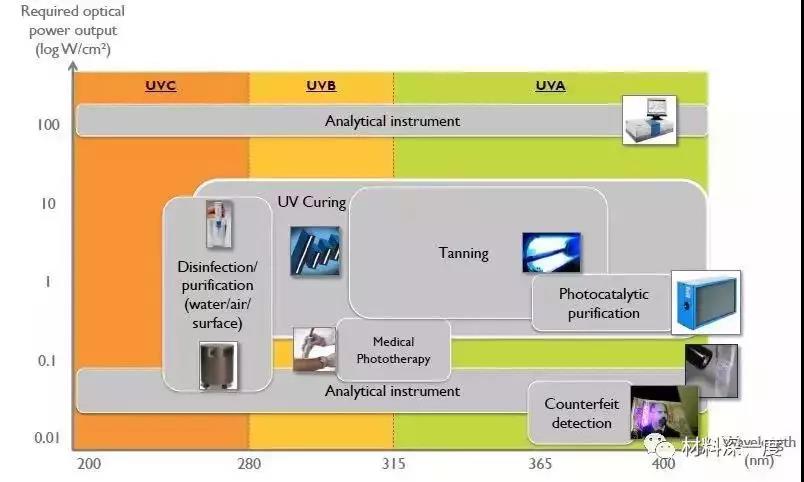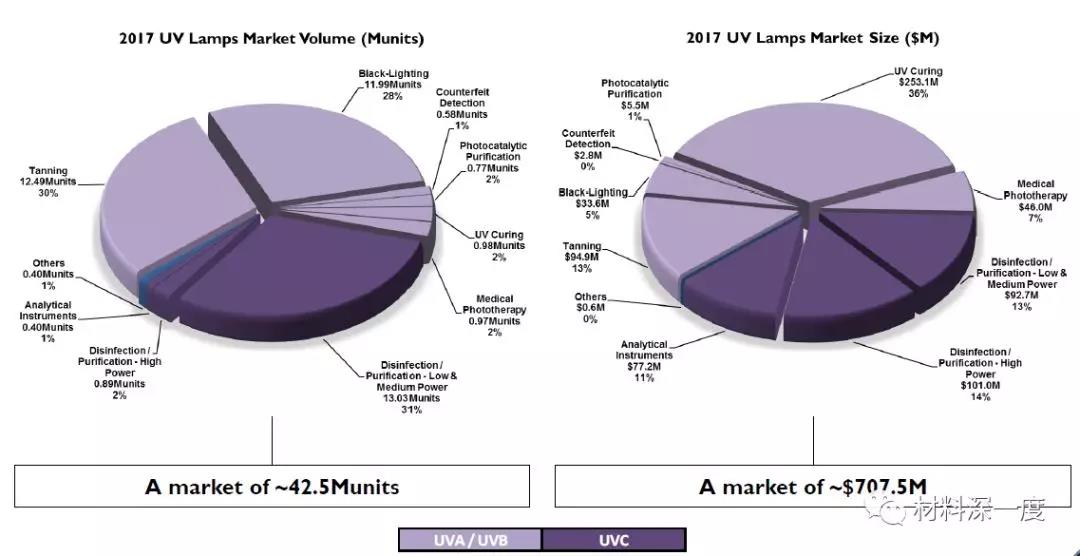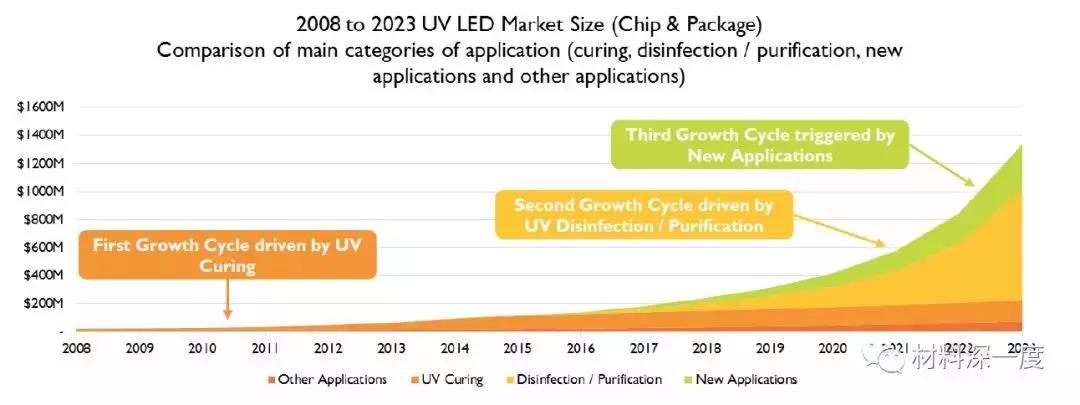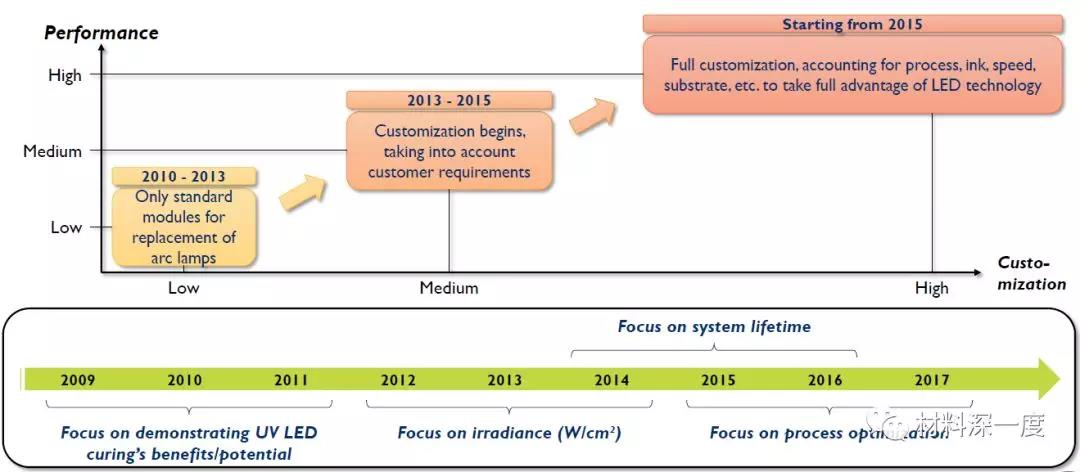Address:7th Floor, Gaofeng Building, Dalang Street, Longhua District, Shenzhen
Website:www.longstartech.com.cn
TEL:0755-2556 9680
FAX:0755-2556 6650
Mobile:13316929948(同V)
Email:James@longstartech.com.cn
Contact Person :James
Ultraviolet wavelength and application
There are three different ultraviolet wavelengths: UVA/UVB/UVC. Each ultraviolet wavelength type has a specific application. Each application can also be defined as a function of the optical power output and the desired wavelength.

UVA(315~400nm) : long-wave ultraviolet (UVA), also known as "black light", represents the main ultraviolet rays in the sun and is responsible for tanning the skin. UVA is generally not harmful and can be used to treat certain skin diseases. Mainly used for uv curing, anti-fake detection, photocatalytic purification, tanning skin.
UVB(280-315nm) : a small but dangerous part of sunlight. Most solar UVB are absorbed by the reduced atmospheric ozone layer. Prolonged exposure can be harmful to the human eye and skin, but it is beneficial to the production of vitamin D and the treatment of serious skin diseases. Mainly used in medical phototherapy.
UVC (200~280nm) : also known as short wave uv or deep uv, unintentional overexposure can cause brief redness and eye irritation, but not skin cancer or cataracts. It is used to purify air, water and surface.
2. Market performance of ultraviolet lamps
According to YOLE, the traditional uv lamp market was nearly 42.5 million units in 2017, with a market share of $708 million. The growth rate is 5.4%, and the compound annual growth rate is expected to be 4.7% from 17 to 2023.

UVA application of uv curing, UVB medical phototherapy /UVC disinfection/purification (municipal and industrial level), analytical instruments and other applications are big market shares, occupying a market share of us $460 million. For these applications, power improvement is the biggest challenge. UVA's tanning, uv irradiation and UVC disinfection/purification (residential and commercial use points/entry points) are among the smaller apps, with a market share of $248 million. For this part of the application, price is the biggest factor.
In addition to the four categories of uv curing, uv light, purification/disinfection (medium and low power) and invisible light, most of the other applications are in the field of relatively small market share and small scale. However, most of the traditional uv light applications still maintain a reasonable growth rate. Ultraviolet leds have yet to have a strong impact on the market.
Iii. Market application of ultraviolet LED
Currently, most ultraviolet leds are used in the UVA market, while the application of UVB/UV is still in its infancy.
As of the second quarter of 2018, all applications of systems based on ultraviolet leds have begun to be commercially available. According to YOLE, the annual growth rate of the LED market (2018 to 2023) is 41%! From $242 million in 2018 to $1.339 billion in 2023.

1. Main application of UVA
1.1 uv curing
The uv curing market in UVA application has been firmly occupying the leading position of uv LED market scale from the very beginning. Uv-curable than having instant drying, infrared curing and heat curing ink and coating performance improvements, environmentally friendly, high productivity, eliminate the advantages of infrared wavelengths, but the ink and paint may be more expensive, higher early equipment cost, compared with the traditional ink and coating, UV ink performance, process integration and sometimes can be difficult. However, recently a large number of manufacturers from Taiwan and China have poured into the UVA LED industry, which has brought great price pressure to the industry and restricted the growth of UVA LED industry. On the other hand, the growing competition can also be seen in the UVB/UVC LED industry. But the upside is that it makes the price of the device ($/mW) faster than expected to meet the requirements of the early adapters, thus enabling a true purification/disinfection market application to begin in 2020/2021. By 2021, the relevant revenue will even surpass the uv curing market.
1.2 development roadmap of uv curing system
From 2010 to 2013, only standard modules of arc lamp can be replaced
From 2013 to 2015, we began to customize according to customers' requirements
In order to make better use of the advantages of LED technology, full customization is carried out according to the actual use requirements of customers (process, ink, speed, substrate, etc.). With the progress of technology, the degree of customization is getting higher and higher

2. Main application of UVB/UVC
2.1 disinfection/purification system
Ultraviolet water disinfection is more and more used in a variety of occasions, and the technology does not contain chemicals, can effectively inactivate pathogens; And because mercury lamps are easy to replace, maintenance costs are low. UVC LED has other advantages, such as:
1. Mercury free: ultraviolet LED does not contain harmful substances.
2. Small footprint: due to the small size of high-power leds, the footprint is much smaller than that of traditional uv systems.
3. Turn on/off immediately: the system can be turned on or off without preheating time, thus extending the service life of LED.
4. No temperature effect: LED does not transfer heat to water, so it restricts scale formation and ensures constant UV output.
The main difference between mercury lamps and uv leds is that their light emission profile has a direct impact on reactor design. Because of the geometrical structure of the traditional ultraviolet lamp, the cylindrical design is needed. The UVC LED lamp is the light-emitting mode of the point light source, so a cylindrical reactor is not required. In contrast to conventional UV lamps, UV leds emit different wavelengths (e.g. 255,265,275nm) ).
2.2 market analysis of disinfection/purification system
Globally, major vendors involved in traditional uv disinfection/purification systems have not yet developed any systems based on uv leds. There are many reasons for this:
1. The price and performance of UVC LED can also be compared with traditional ultraviolet lamp. UVC leds cost about $1 per mW as of the second quarter of 2018, compared to $1.50 per W for traditional uv lamps.
2. The system development based on UV LED needs new professional knowledge and large investment. Oliver LAWAL (CEO of Aqui Sense Technologies), in an interview, described the development of his company's compact PearlAqua product (the first mass-produced uv-c LED water disinfection system) as the result of eight years of research, over $5 million in investment and hundreds of hours of user interaction.
3. The system development based on UV LED will directly affect the main business of major manufacturers. Systems/equipment business and uv light business (i.e. replacement market). The situation in the uv disinfection/purification industry is similar to that in the uv-curing industry a few years ago: no traditional manufacturer would risk developing a more expensive technology (i.e., R&D, resources, marketing) and receive less payment... At least "until they have no choice" (as in the UV curing industry).
Therefore, the developers of uv LED systems for water sterilization/purification applications will come from new manufacturers in the short term.

